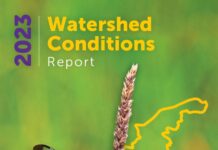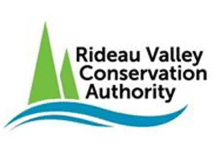from the RVCA,
This statement is to advise that the low water status in the Rideau River watershed is being downgraded to “Minor” from “Moderate” severity under the Ontario Low Water Response Program because of recent precipitation.
Significant rain over the last week pushed 30-day rainfall totals above what is normal for the time of year at most climate monitoring sites in the region. However, the average 90-day rainfall measured at climate stations in and around the watershed is below 80 per cent of normal for this time of year which represents “Minor” low water severity. Looking ahead, the seven-day weather forecast suggests we may receive between 5 and 10 mm of rain across the watershed.
Stream flow values for all waterways are much closer to normal for this time of year compared to a few weeks ago. For example, the measured flows for the Rideau River at Carleton University and the Tay River in Perth are both slightly above 100 percent normal for this time of year.
Measured flows for the smaller tributaries such as the Jock River and Kemptville Creek are still below normal for this time of year. Field observations around the watershed indicate that ecological conditions are much improved compared to a few weeks ago.
Following an early spring freshet this year, Parks Canada are closely monitoring the water levels throughout the Rideau Canal system inside the Rideau Valley watershed. 50–75% lower than normal amounts of precipitation in June and July resulted in below average level and flows conditions across the entire watershed. However, due to the recent significant rainfall received around the reservoir lakes (located in upper part of the watershed), the reservoir lake levels are near and/or above average. Due to the localized nature of the rain events, other nearby lakes located in the upper reaches of the Rideau Valley watershed, remain below normal. Rideau River flows downstream of Big Rideau Lake have been reduced to minimum. Water levels in the Rideau River below Smiths Falls are within navigable ranges but some areas are below average for this time of year.
Watershed residents and businesses are encouraged to voluntarily reduce their water usage by 10 percent. This is especially important for those who have permits for taking water from surface or groundwater sources and all residents on private, communal or municipal wells. There is less of a concern for residents of urban Ottawa because the City of Ottawa central drinking water system draws from the Ottawa River. Residents throughout the watershed should be aware of any bans or bylaws that may be in place in their municipalities regarding fires or watering bans.
Conservation Authority staff continue to monitor conditions and communicate with water managers throughout the watershed. Updates to this message will be issued as conditions warrant.







